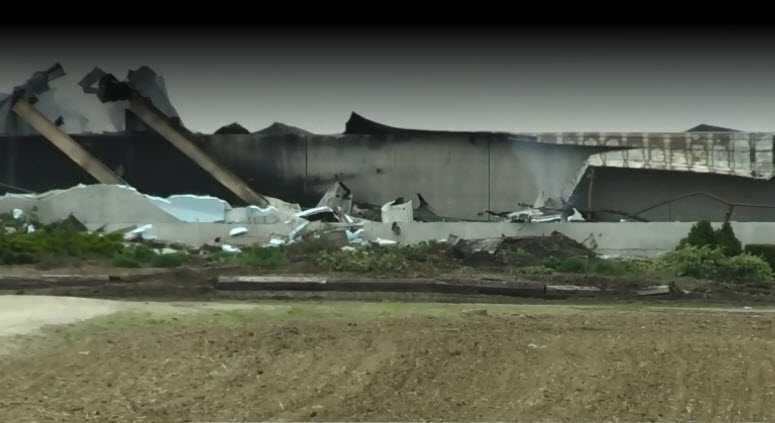A fire in Oxford county claimed the lives of about 3,000 sows
By Diego Flammini
Staff Writer
Farms.com
A barn fire on an Oxford County hog farm claimed the lives of more than 3,000 animals.
A total of 45 firefighters from all four Norwich Township stations responded to a call to a farm between Pick Line and Middletown Line near Otterville, Ont., at about 9:00 p.m. Friday night.
Fire departments from South West Oxford Township and Tillsonburg also assisted with the blaze.
When crews arrived, they found the barn completely engulfed.
"We saw some heavy smoke and flames were showing from the roof in the middle of the barn," Paul Groenveld, director of Fire & Protective Services with the Township of Norwich, told Farms.com today.

A fire destroyed a hog barn in Oxford County Friday.
Image: CTV News
At least 3,000 sows and “an undetermined number of other pigs,” perished in the fire, CTV reported yesterday.
Witnesses could see the flames far from the farm site.
“We saw the smoke and it was just barrelling up,” Justin Eus told CTV News yesterday. “We got pretty close to it, we were probably just a concession away, but the silo was still up.”
The fire is not suspicious, Ontario Provincial Police say.
The Ontario Fire Marshal called off its investigation due to the extensive damage, Groenveld said.
Damage is estimated between $2 and $3 million.
Another fire crew responded to another burning barn earlier on Friday.
Oshawa Fire Services received a call around 3:00 p.m. to a location near Thornton Road North and Howden Road West.
The firefighters controlled the blaze and protected the nearby house, despite water supply challenges.
“We had crews from Oshawa and Whitby helping with water supply and exchange,” Oshawa Fire Services platoon chief Jim Lee told Oshawa This Week on Friday. “Pumper crews brought water to the site due to lack of hydrants at the rural location.”